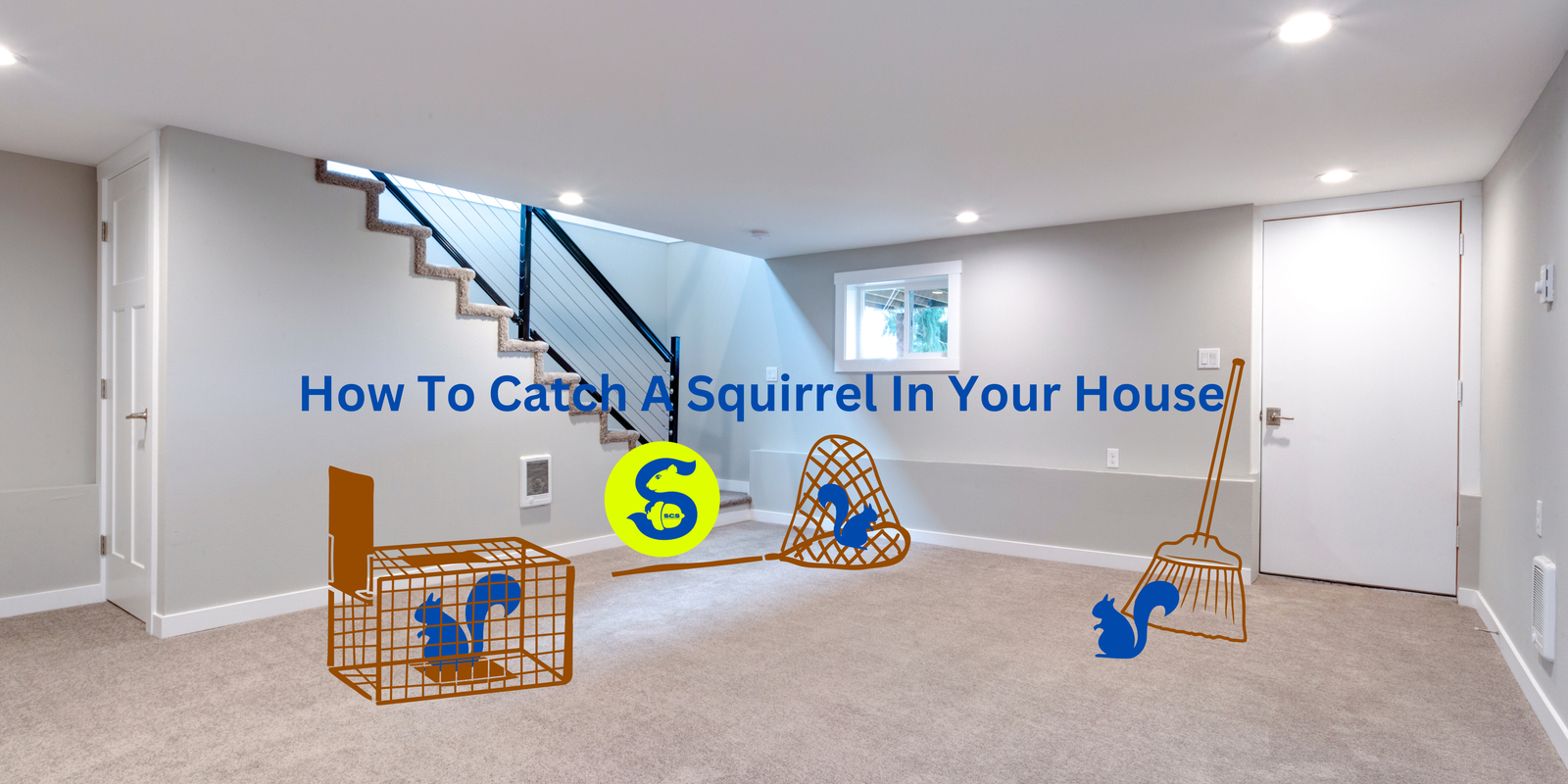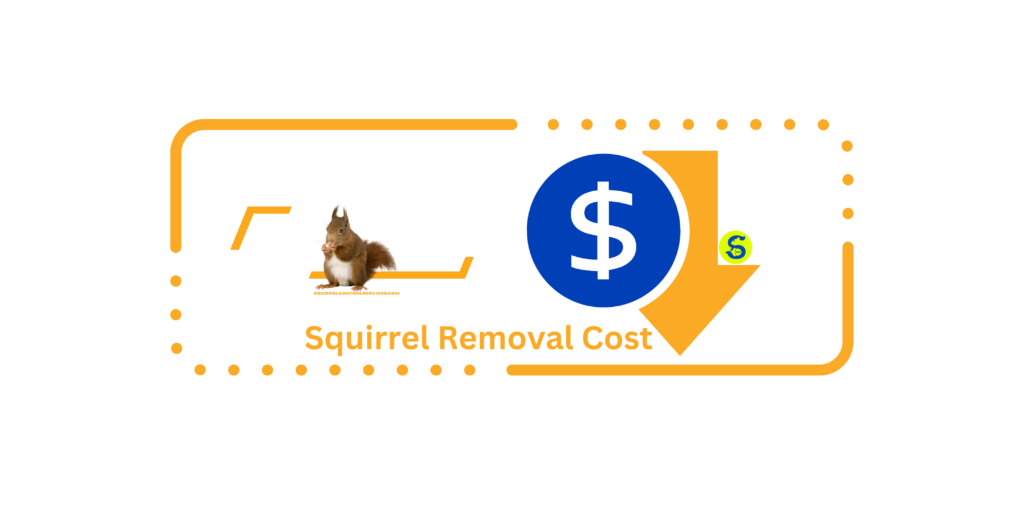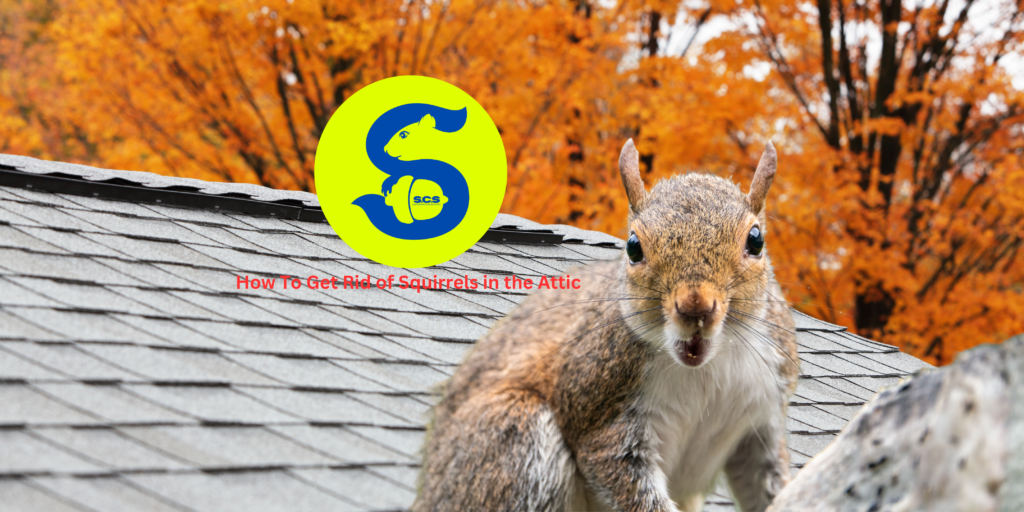How To Catch A Squirrel In Your House
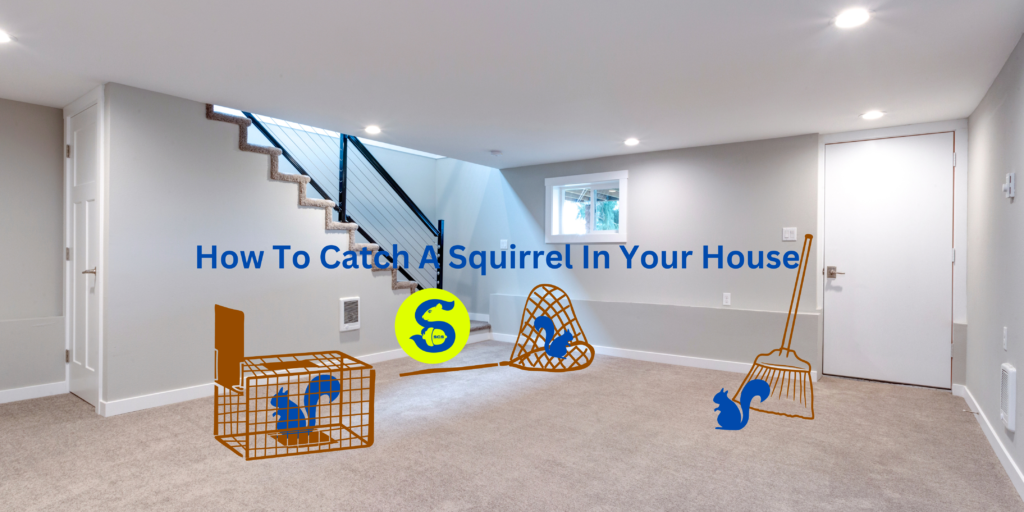
Tips For Catching a Squirrel Loose inside The House
Live Squirrel Trap, Fishing Net or Chase the Squirrel Outside
Having a squirrel loose in the living space of your house can be a real nuisance. Not only can these wild animals cause damage to your property, but they can also pose health risks. If you’ve got a squirrel inside, it’s essential to act quickly and humanely to remove it. Most squirrels enter homes through a door open or a ripped window screen, and while on rare occasions they might find other ways in, the best method to get them out involves staying calm and collected. The squirrel is likely scared and unsure of its surroundings. You do not need lethal traps; a live trap is much better. By using humane methods, such as a one-way door, you can safely guide the squirrel back outside without causing it harm. Read on for helpful tips to ensure a safe and efficient process for you and all the squirrels you may encounter.

Understanding Squirrel Behaviour
Before you embark on your mission to catch an animal, it’s crucial to understand how and why it got there in the first place. On average, most wild animals will get in through your roof or chimney cap if something gets inside your home. Squirrels typically enter homes for food or shelter or have been displaced from their natural habitat. Squirrels might also enter homes for nesting purposes, especially during colder months or when displaced from their natural habitat. The animal can slip inside if you have small openings in your roof or soffit. They can also access your indoor space through an open door or window. Once inside a house, squirrels might behave nervously, exploring nooks and crannies and trying to find an escape route.
Signs of a Squirrel in the House
Identifying the presence of a squirrel is the first step. Look out for:
- Noises and Sounds: Scratching, scampering, and gnawing noises, especially in attics or walls.
- Droppings and Chew Marks: Squirrel droppings are small and pellet-like, and you might find chew marks on wood, wires, window and door frames and door edges.
- Squirrel Sightings: Spotting the squirrel itself, though a live squirrel trapped inside one room in a house may hide when you’re around. If you suspect a trapped squirrel, create an exit for it and consider setting a humane trap to safely release it outside.
Squirrel Removal Cost
- Removal: One-Way Door, Trapping
- Repair: Shingles, Vents, Soffit
- Prevention: Reinforce Vulnerable Areas
Safety Precautions
Safety should be your top priority. Here’s how to protect yourself:
- Personal Safety: Wear thick gloves and long sleeves to avoid bites and scratches.
- Protecting Pets and Children: Keep them away from areas where the squirrel has been spotted.
- Preventing Squirrel Bites and Scratches: Stay calm if you catch a squirrel in the house, and handle the live trap with care to avoid direct contact. Wearing protective gear is crucial to preventing squirrel bites.
Gathering Necessary Tools
To catch a squirrel loose in the living space of your house, you’ll need a few essential tools:
- Humane Cage Traps: These traps, which are available at most hardware stores, are designed to catch squirrels without harming them.
- Best Bait Options: Peanut butter is particularly effective for squirrel bait. You can also try tuna or bits of fried chicken.
- Small Handheld Net: Like the ones fishermen use to scoop up their catch.
- Protective Gear: Wear gloves and a top with long sleeves.
Locating the Squirrel
Finding the squirrel is crucial. They tend to hide in dark, quiet places, like behind furniture. You can also use technology like motion-activated cameras to track their movements. If possible, try to contain the animal in one room, bait it, and set the live trap in there.
Additionally, squirrel repellents should be considered to help keep the squirrels contained in one area.
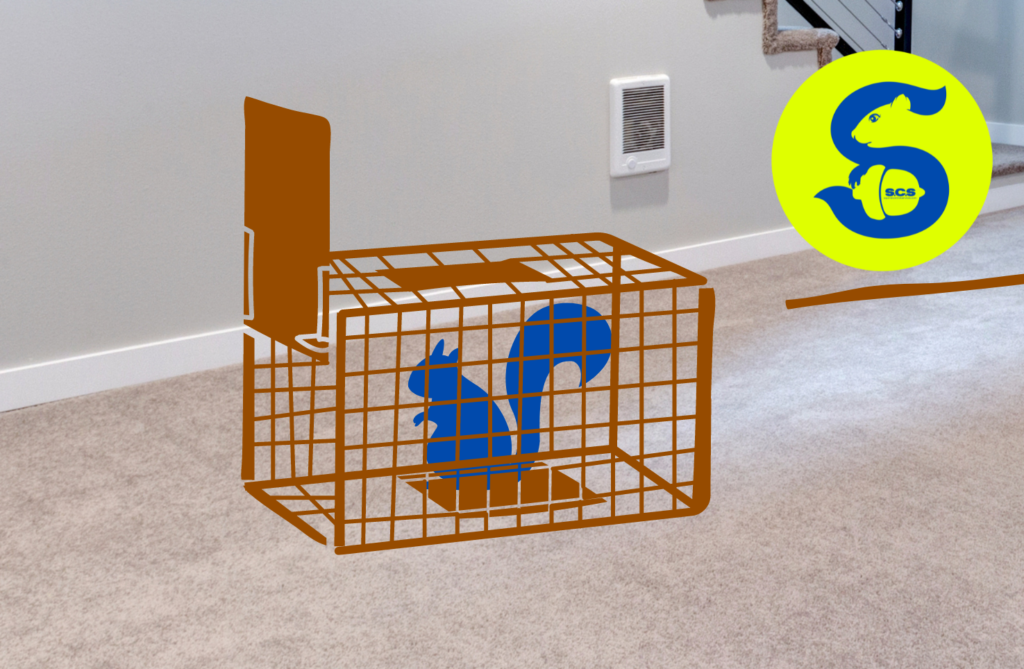
Setting Up Cage Traps
Choose a humane trap to catch the animal and follow these steps:
- Types of Humane Traps: A see-thru cage trap is the most effective, as you’ll know, as soon as the squirrel is trapped inside.
- Step-by-Step Trap Setup: To catch the squirrel, bait with a dab of peanut butter or a spoonful of tuna inside the live trap. Set the trap according to the manufacturer’s instructions and position the live traps in an area where the squirrel has been active. The squirrel enters, and the trap door closes.
- Best Locations for Traps: Near the squirrel’s entry point or along its travel path.
Squirrel exclusion methods, such as sealing entry points after trapping, are essential to prevent future intrusions.
Using a Handheld Net
An effective and immediate method is using a small handheld net:
- Catching the Squirrel: Approach the squirrel slowly and use the net to scoop it up quickly. Sometimes, if you’re lucky, you can catch the wild animal in mid-run.
- Handling the Squirrel: Once caught, cover the net to calm the squirrel, make a clear path to the front or back door and prepare to release the squirrel outdoors.
Using a handheld net is part of a broader squirrel control strategy to manage and remove squirrels from the home.
Squirrel Removal Manually
Chasing the squirrel outside can sometimes be the fastest way to get rid of it:
- Open Windows and Doors: Provide a clear exit path for the squirrel.
- Guiding the Squirrel: Use a broom or another object to gently guide the squirrel towards the open door or window.
- Patience and Luck: This method of removing squirrels requires some patience and a bit of luck.
Additionally, squirrel deterrents, such as loud noises or bright lights, can help guide the squirrel towards the exit.
Checking Traps Regularly
Once your trap is set, check it frequently:
- How Often to Check Traps: Check squirrel traps at least twice daily.
- What to Do Once the Squirrel Is Trapped: Approach calmly, cover the trap with a cloth, take the trapped squirrel outside and prepare for release.
Releasing the Trapped Squirrel
Release the squirrel safely and ethically:
- Where and How to Release the Squirrel Safely: Remove squirrels to a wooded area not too far from your home.
- Legal Considerations for Releasing Wildlife: Check local laws and regulations to ensure compliance.
Squirrel relocation should be done carefully and ethically, following local regulations.
Preventing Future Squirrel Infestations
To avoid future issues, take these preventive measures:
- Sealing Entry Points: Use steel mesh or caulk to block holes and gaps to help prevent a squirrel infestation.
- Squirrel Repellents and Deterrents: Consider natural repellents like peppermint oil.
- Regular Home Maintenance Tips: Regularly inspect your home for potential entry points.
Additionally, consider specific squirrel proofing measures such as installing chimney caps and sealing entry points.

When to Call a Professional
Sometimes, it’s best to get expert squirrel removal help:
- Signs That You Need Expert Help: Persistent issues, multiple squirrels, baby squirrels or a nest in the attic, or if you’re uncomfortable handling a live squirrel.
- What to Expect from Professional Wildlife Removal: They’ll inspect your house, cover gaps and small holes, set a one-way door, and advise any areas that need prevention screening to stop future infestations. If there are no small holes or gaps on your house roof, they will bait, set a trap, and release the squirrels safely.
Professional squirrel control services can provide comprehensive solutions for persistent or complex issues.
Conclusion
Dealing with a squirrel loose in your living space can be daunting, but with the right approach, it can be handled humanely and efficiently. Remember to prioritize safety, use humane methods, and take steps to prevent future intrusions. Addressing the issue promptly will help you maintain a squirrel-free home. Implementing effective squirrel exclusion methods is crucial to prevent future intrusions.
FAQs
How long does it take to catch a squirrel? The time can vary. In a worst-case scenario, it could take a few weeks, but with the right trap and bait, it can often be done within a day or two.
Are there any risks to catching a squirrel myself? There are minor risks, such as bites or scratches, so using protective gear and handling the situation carefully is important. However, saving money can also have several benefits.
What can I do to help keep squirrels away from my property? There are certain things you can do that might help. Sweep up any bird seed that might be on the ground. Bird feeders are big attractants to a house for squirrels. If you have fruit trees, pick up and dispose of any fallen fruit. Install a bright light or motion light. Contraptions that emit loud noises or sonar beeps can be purchased. Rags doused with apple cider vinegar can be laid on the ground around your house.
What should I do if the squirrel is injured? Contact a local wildlife rehabilitator or animal control for assistance.
Can I use poison to get rid of squirrels? No, never feed squirrels poison bait—it’s inhumane and can be illegal. Plus, it will not prevent future infestations, as more squirrels could still get in your attic. You might be dealing with a mother squirrel with her young squirrels in your attic, so this poses risks to other wildlife, pets, and humans.
How can I squirrel-proof my home? Trying to DIY this on your own might be tricky. Hiring a professional wildlife control company to cover any entry points and set a door to evict them has several benefits. You can also use repellents and maintain your home to prevent squirrels from finding ways inside. Additionally, squirrel exclusion methods such as sealing entry points and using repellents to keep them out should be considered.


